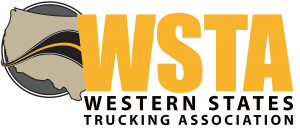If you have attempted to purchase a new diesel powered truck in California (or even states that eagerly adopted CARBs ACT rule), you have probably run into a roadblock where the dealership cannot sell you the truck you want or need.
This is directly the result of a deal struck between CARB and the Truck and Engine Manufacturers Association, its members, and the Ford Motor Company. That deal is often referred to as the Clean Truck Partnership (CTP).
Truck dealers are complaining that they must meet zero-emission vehicle (ZEV) sales quotas in order to sell diesel powered trucks and since nobody wants a ZEV, the dealerships are limited in meeting customer demands for diesel equipped trucks even though their sales are still permitted, with a caveat.
Truck dealership have blamed the Advanced Clean Trucks regulation as the primary cause, but it isn’t that simple. It certainly is a factor, but a bigger factor is the agreement made by the OEM’s with CARB related to the Heavy-Duty Omnibus engine standard adopted by CARB in 2021 (and still awaiting an EPA waiver) further reducing emissions standards for NOx and PM. Currently, California and federal emissions standard are not harmonized and will be only marginally different by 2027.
Based on dealer and fleet owner complaints to CARB, they performed an analysis of the issue and issued a report on September 25, 2024.
Basically, CARB threw “cold water” on the dealership complaints and zeroed in on OEM sales mandates for dealerships to meet. CARB’s analysis stated, “Through discussions with manufacturers, dealers, and fleets, it appears numerous manufacturers have begun to inform their customers they will be applying future requirements to purchase ZEVs before they can acquire combustion vehicles to each of their dealer or upfitters regardless of the types of vehicles they sell as ZEVs. Some have expressed plans to begin implementing a rigid policy to require each dealer or upfitter to purchase a certain number of ZEVs from the manufacturer before they can get any internal combustion vehicles (ICE) whether or not the manufacturer offers ZEVs in the market segment the dealer specializes.”
CARB states as per their agreement with the OEM’s, they could be choosing to use legacy emissions credits to meet the demand for diesel engine sales, but they’re not doing that. CARB stated in its findings, “In summary, the manufacturers are well-situated to comply with the ACT regulation’s requirements for the 2024 MY and there are more than enough available ACT credits that manufacturers could purchase, if necessary, to sell dealers what is needed.”
So, we’re caught in somewhat of a “he said, she said” situation, but not exactly. OEM’s have made a decision to ride the pork barrel of available public funding to push ZEV’s to their customers regardless of whether they meet duty-cycle requirements or whether they can get the necessary charging in-place. In a nutshell, the OEM’s made an agreement with CARB and choose to ignore their customers as well as associations who are suing to derail the ZEV mandate. The OEM’s invested in producing ZEV vehicles and at the least they want their R&D money back, so they are trying to force feed their customers something they don’t want at this time and it is blowing up in their face. They are giving up sales on diesel trucks as part of a gambit to force ZEV’s on customers not suited to early ZEV adoption, nor required to adopt them.
CARB is not blameless either. Their rigidity is holding fast to the ACT will actually hurt air quality improvements due to truck owners basically being forced to keep older trucks or go purchase later model used trucks (mostly out-of-state). We saw this same dynamic play out with the Truck & Bus regulation. After full implementation of the rule, there were reports that air quality improvements were hampered by CARB shoving its nose into the normal trade cycle of truck owners. Many chose to keep their older equipment longer by adding a DPF.
The CARB report also stated that the European units of most of the OEM’s are charging $88,828 more for a comparable ZEV in the U.S. than they sell for in Europe. CARB noted that the pricing for ZEV’s has actually decreased in Europe while increasing in the U.S. At CARB’s October 24 hearing one Board member expressed that CARB is being “ripped off” by the OEM’s.
A lot of government money, both local, state, and federal (as part of the Inflation Reduction Act) is being thrown at forced ZEV adoption. Apparently, the pillars of industrial capitalism also understand crony capitalism quite well and as we see with any activity or behavior subsidized by the government, costs always increase.
States that blindly adopt CARB regulations (CAA section 177 states) are feeling the pain too. Recently Oregon, Massachusetts, and New Jersey are at least discussing delaying their implementation of the Omnibus (and perhaps ACT) and New York is under increasing pressure to follow suit.
OEM’s because of selling out the needs of their customers to the desires of the environmental left have cut themselves into a deal (with CARB) where their desired vehicles sales and ROI are going to make it tough on them financially. Remember, their deal also includes ignoring any and all legal setbacks, even a Supreme Court decision in our favor that CARB and EPA are exceeding their authority and agreeing to only sell ZEV’s in California.
Talk about whipping the finger to your customer base.




